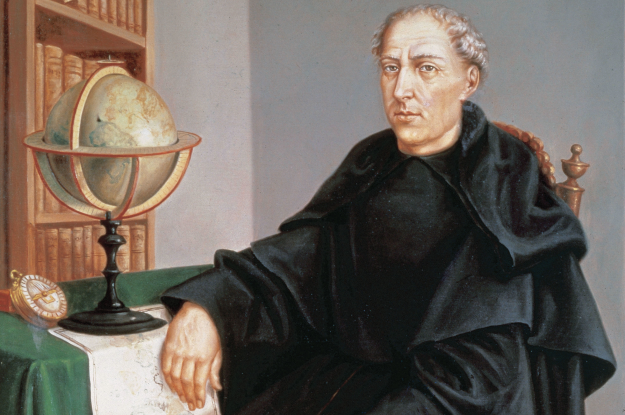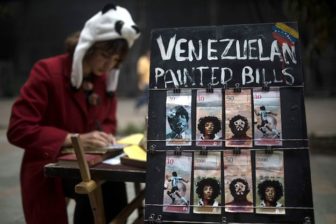This article is adapted from AQ’s latest issue on China and Latin America. Click here to read more from our series on forgotten Latin American history.
The year was 1635, and the barbers of Mexico City were moved to protest. Facing a threat to their livelihoods — what they deemed unfair competition from their Chinese counterparts — they asked city authorities to intervene. The municipal council agreed, ruling that Chinese barbershops be limited to just a dozen, confined to the outskirts of the city. It didn’t do much good: Three decades later, there were more than 100 Chinese barbershops operating within Mexico City.
The Chinese presence in Latin America is usually portrayed as a relatively recent phenomenon. Yet Mexico City already had a Chinatown as early as the 1600s, thanks to the Manila galleon or nao de China — a trans-Pacific trade route from Manila to Acapulco that would profoundly shape the Americas over the course of two centuries, from the currency people used to the porcelain they bought for their homes.
Sailors had been making the westward journey from the Americas to Asia for years, using favorable westward winds and currents to guide them. But it was not until 1565 that friar and navigator Andrés de Urdaneta — expressly requested by Spain’s King Philip II to join an expedition led by Miguel López de Legazpi to the Philippines — first managed to sail back to New Spain. The significance of this tornaviaje, or return trip, was well understood at the time. A contemporary letter noted that “those of Mexico are mighty proud of their discovery, which gives them to believe that they will be the center of the world.”
They were arguably correct. The route between China and Spanish America became a lynchpin of the world’s first truly global trade network, as some Asian goods passed through Mexico on their way to Europe — while others were sold to eager customers in the New World.
Indeed, tens of thousands of Asians — mostly Chinese and Filipinos — began to settle in what was then called New Spain. The occupations of these early Asian migrants included barbers, vendors, harp players, dancers, scribes, tailors, cobblers, silversmiths and coachmen. Many would have plied their trade in the Parián, the Asian market in the Plaza Mayor. The contemporary poet Bernardo de Balbuena described Mexico as “the best of all the world, the cream of what is known and produced, here abounds, is sold and cheap.” Among the treasures Balbuena listed were spices from Southeast Asia, ivory, diamonds, Chinese porcelain, Indian fabrics, Siamese ebony, and rubies and emeralds from India and Sri Lanka.
The trade from China deeply influenced tastes beyond the few affluent families that could purchase Chinese silk, lacquer furniture, ivory carvings and other luxury goods. Finished items from Asia such as clothing, bed linens and rugs were the mass-market consumer goods of the age, which city-dwellers came to expect and rural populations desired. The famous and still immensely popular silk Manila shawl (mantón de Manila), a staple of Spanish fashion, has its origins in Guangdong — its name reflects its routing.
Foreshadowing “original design manufacturing,” Chinese manufacturers developed new products for the American market. Chinese manufacturers in Jingdezhen redesigned in local porcelain jícaras and mancerinas — coconut shells or gourds in which chocolate was drunk and the silver mounts that held them — to sell in American and European markets. Meanwhile, Mexico’s main domestic pottery industry in Puebla emulated the Chinese blue and white coloring as well as form.
Common currencies
For China, the crucial aspect of this trade was the form of payment received: silver and only silver. Silver had been the basis of the Chinese money supply since the 15th century, but China had few domestic sources. Silver from Spanish-American mines was so central to China’s economy that the trans-Pacific trade route is better known as la ruta de la plata — a silver, rather than silk, road that integrated China into the world economy.
It was noted early on that China valued silver more highly than gold, compared to European standards. In 1609, the merchant Pedro de Baeza estimated profits of 75 to 80 percent on what we would now call exchange rate arbitrage. Consequently, gold flowed out of China as silver flowed in.
Spanish coinage — real de a ocho or peso de ocho (whence “pieces of eight”) — had a well-deserved reputation for standardized purity and weight. And in 1732, the mint in Mexico introduced machine-made “milled” coins with raised and serrated edges. The design of the edges incorporated deliberate anti-fraud features to prevent clipping and shaving, something all too possible with the previous hand-struck coinage.
Hence, the first global currency emerged: No other coinage could meet the demand in Asia and beyond, and Spanish coins could also be largely accepted as they were. The U.S. dollar is a direct derivative of the peso, which itself was legal tender in the U.S. until well into the 19th century.
The Manila galleon wound down in the midst of the Mexican War of Independence, with declining profitability and increased competition, and came to an end in 1815. But its legacy endured in the form of a shared currency. Independent Mexico’s eagle dollar, minted with local silver like the colonial reales and pesos before it, was the basis for Chinese coinage. Both the Chinese “yuan” and Japanese “yen” mean “round,” a reference to the original Western currency they were based on. Prices in China were regularly quoted in “dollars mex,” owing to their peso’s lasting reputation for purity and global value. Several erstwhile competitors, including a U.S. trade dollar and the first Hong Kong dollars, were seen off in the second half of the 19th century.
Although the Manila galleon was relegated to the dustier shelves of the historical record, a present-day reincarnation of the Silver Way is evident: As China seeks to build relationships in Latin America, it can, and increasingly does, call upon centuries of shared history. Whether called la ruta de la plata, the Manila galleon, the nao de China or the Maritime Silk Road, it is a reference to a status quo ante, one that predates and sidesteps the U.S.’s role in the region.
—
Gordon and Morales are coauthors of The Silver Way








